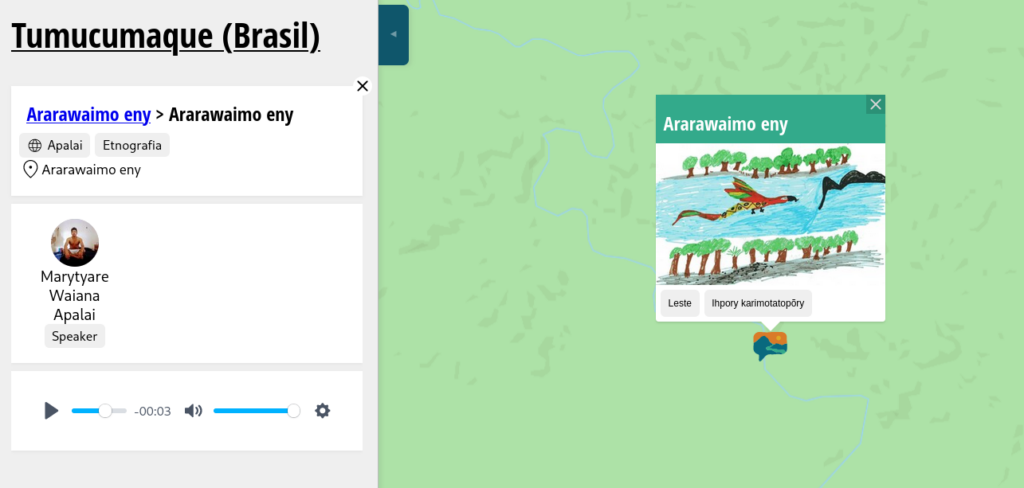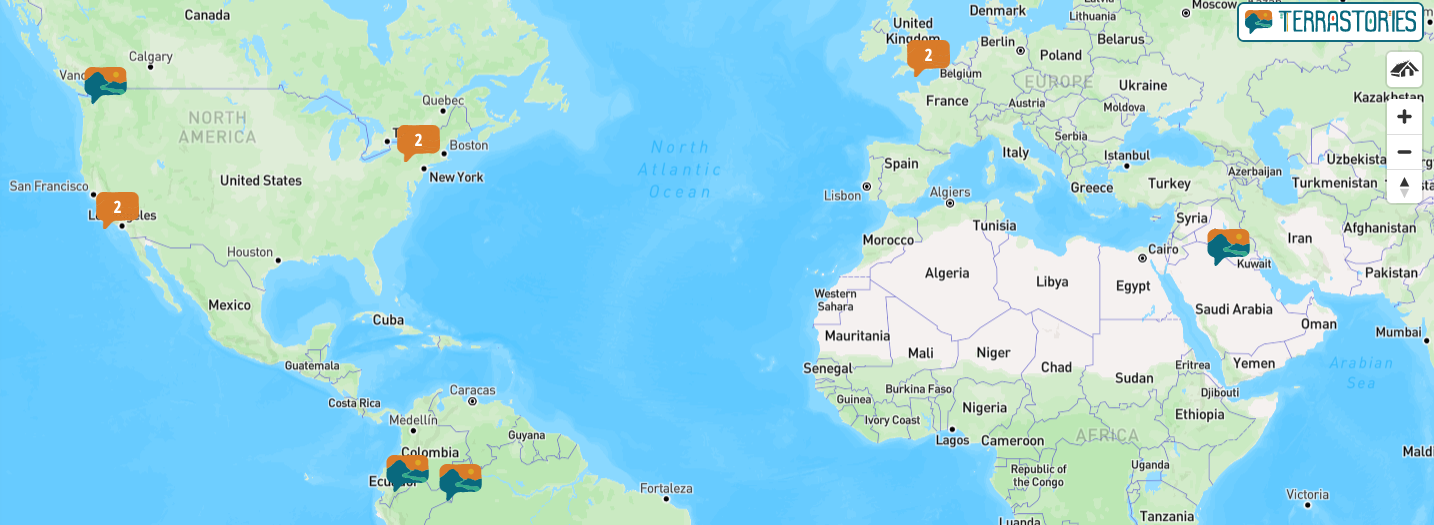Communities around the world have been using Terrastories as a digital tool to document stories in video or audio forms while connecting them to places on a map. These efforts are often linked to deep, local, and internal community processes such as those of language revitalization, archiving, and land defense. Explore Terrastories, a freshly released feature, weaves a new bridge between those local processes and a broader public, with access to specific place-based stories that communities have decided to share online.
What’s new with Explore Terrastories?
Terrastories was created with the youth of Indigenous and Earth Defender communities in mind. In such contexts, all forms of knowledge tied to the territory, like oral stories, require critical and sensitive questions when it comes to digitization processes. For this reason, Terrastories has always considered security and data protection as very important concerns in the ways that the content is accessed. While some communities host their stories on a local server (offline) and others on online servers such as https://our.terrastories.app, up until the emergence of this new feature, all users have required special log-in credentials with diverse levels of access designated by the communities.
While this remains present for communities to use locally and privately, Explore Terrastories offers a whole new interface that is similar to the one used locally but is open to anyone interested in navigating it online or offline. Most Terrastories users are Earth Defenders and Indigenous peoples like the Wayana in Suriname, the Aparai, Isolados Akurio, Isolados do Rio Citaré, Katxuyana, Tiriyó e Wayana in Tumucumaque territory in Brazil, or the Haudenosaunee community at the Six-Nations Reserve in Canada. However, uses have also expanded to diverse kinds of communities, such as that of the Chinese diaspora community that extends from China to the Bay Area in San Francisco.
These and other communities are nurturing Explore Terrastories as a new growing window to a diversity of place-based stories that they consider important to share and position in this shared map. As Rudo Kemper, founder of Terrastories explains,
“This is a way to visualize a different kind of traditional knowledge, which can be stories, poetry, and song. It is also about visibility and representation, with the ability to control what gets represented”.

Why is Explore Terrastories important for communities?
Explore Terrastories was funded by the Association of Tribal Archives, Libraries and Museums through a grant to Digital Democracy from the American Rescue Plan: Humanities Grants for Native Cultural Institutions fund, which was focused on the damage that the Covid-19 pandemic brought on to cultural institutions and processes to continue doing cultural work for Indigenous communities during the pandemic. There was a strong interest from communities to use Terrastories online as a way to continue communicating with each other, sharing information and continuing to do pedagogy about cultural knowledge online while social distancing.
A more concrete example is the Sisseton Wahpeton Oyate Dakota community in the United States. They wanted to document cultural knowledge in an online way so that everybody from the community could access it without needing to meet up in person. Moreover, the idea grew along with awareness after a lot of Elders passed on because of COVID. With the huge loss of knowledge that went along with them, they wanted to start using Terrastories as a way to preserve and document some of that knowledge while the others were still alive.
Beyond the “online access” improvement, the “explorer” side of the interface came out of this stage because a lot of the communities also wanted to share some of their local processes with the public. This is also tied to an ongoing conversation in the United States and many other places of the world, towards reclaiming Indigenous names of places that are called often arbitrarily after settler names. In this sense, collective efforts like Native Land Digital or Terrastories have become part of the conversation as tools to bring visibility to this matter. As Rudo explains,
“A place name is one thing, but once you know the story behind the place, it brings a lot more impact, and even emotional attachments to why that place is so important to a community. That’s part of the reason why communities also wanted to share some of their knowledge for the greater public, including people from outside the community.”
Explore Terrastories is now available here with a growing collection of place-based stories in diverse formats. Listen, watch, explore and stay tuned to learn more about the process behind these stories!

